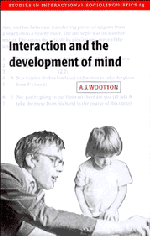Book contents
3 - Imperatives and sequential knowledge
Published online by Cambridge University Press: 24 August 2009
Summary
One kind of linguistic design which is used to perform requests is the imperative construction – orders and injunctions such as ‘Go away’, ‘Leave him alone’ and ‘Don't do that.’ By the age of two most English-speaking children are capable of using this construction, and equivalent kinds of construction are reported as being in the repertoire of children of this age in other cultures (for example, Schieffelin 1990: chapter 7). Even where the imperative is syntactically more difficult to produce, as in Italian, children still seem to acquire the requisite skills by about the age of 2;4, and before that age they manage to use linguistic forms which are functionally similar in that they are also designed as orders or injunctions (Bates 1976: chapter 8).
From the age at which such imperatives are first used the child also has alternative ways available to her for making requests. In the case of Amy, who first made extensive use of imperatives in her recordings at 2;1, some of these alternatives are used quite infrequently. Examples of these would be constructions involving the verb phrase ‘have to do x’ (as in Mummy have to get the medicine now and Mummy have to put it); simple namings of the thing desired by the child (as in A little bit of that cheese) which, in context, can function as requests; and problem descriptions (such as That one won't stand up properly).
- Type
- Chapter
- Information
- Interaction and the Development of Mind , pp. 56 - 96Publisher: Cambridge University PressPrint publication year: 1997



